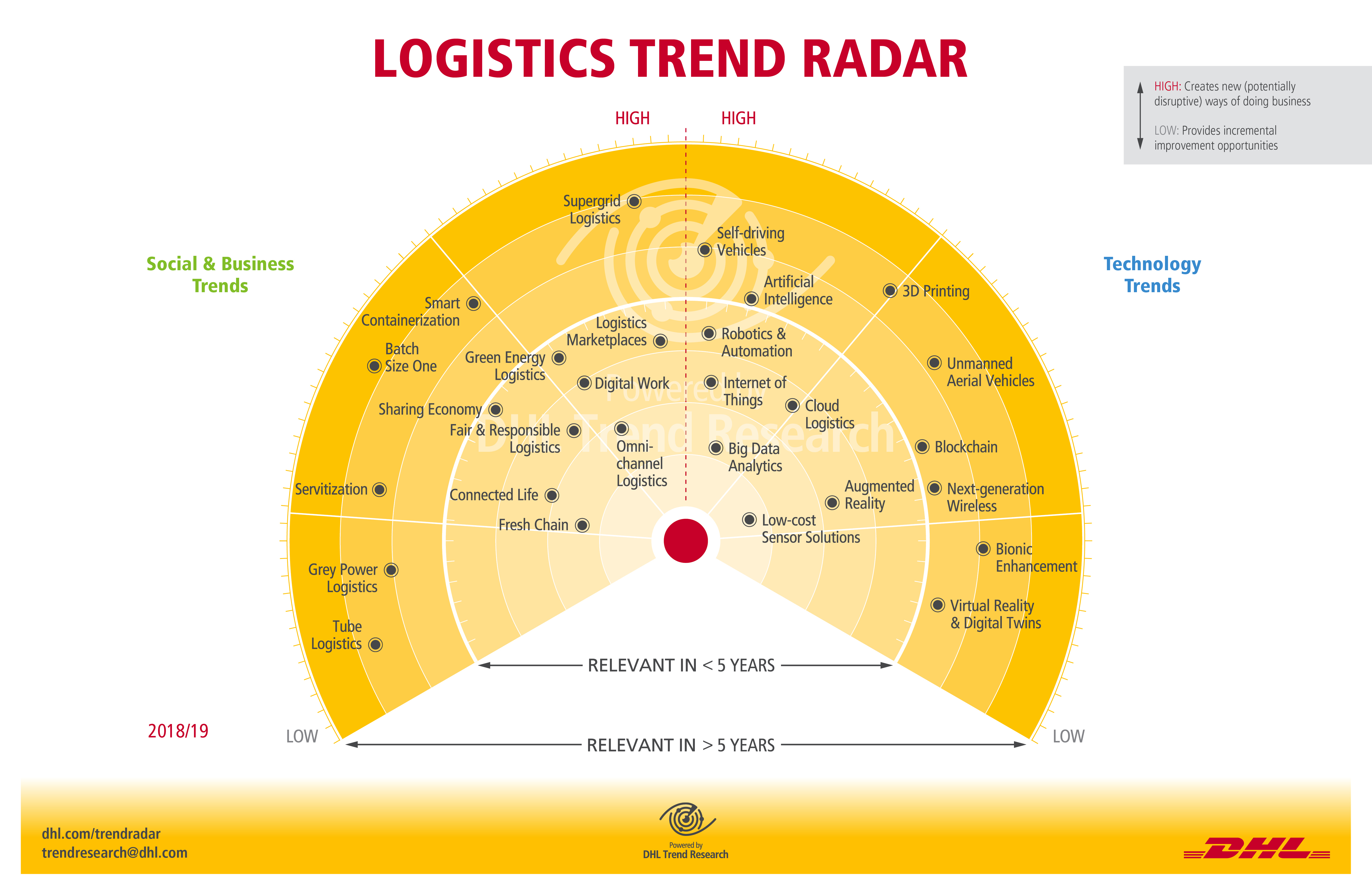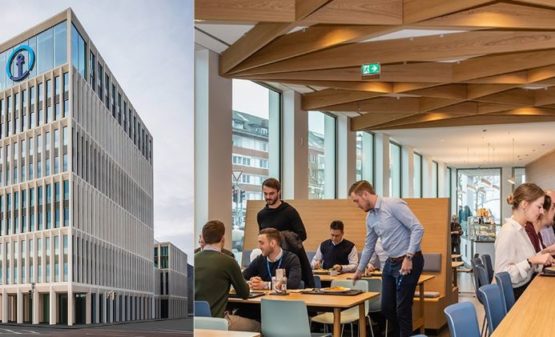In the fourth edition of the Logistics Trend Radar DHL reveals 28 key trends that could impact the logistics industry in the next five to ten years. The Logistics Trend Radar is developed through the analysis of mega- and microtrends as well as direct input from a large partner eco-system including research institutes, tech players, start-ups and customers.
“In this edition, we focus strongly on the digital revolution happening in the industry and its impact across four key elements defining the future of logistics: customer-centricity, sustainability, technology and people,” said Matthias Heutger, Senior Vice President, Global Head of Innovation & Commercial Development at DHL.
-)Customer centricity will be key to deliver on customer demands for a faster and more convenient logistics experience. An ever increasing amount of goods that can be purchased online – especially in the B2B market, is driving the need for B2B Omni-channel Logistics solutions. Customer demand is also driving growth in direct-to-consumer shipments of time-and-temperature sensitive goods. This Fresh Chain will require new innovations in packaging, storage and delivery of goods, such as groceries and pharmaceuticals. A key area for innovation in the last-mile will be the integration of logistics services into smart home environments captured as the trend of Connected Life.
-) Sustainability will become a mandate to operate in the logistics industry, as governments, cities and solution providers commit to sweeping agreements to cut down on CO2 emissions and waste.
-) Technology will become widespread in logistics as the cost-performance-ratio tips for key trends such as Internet of Things and Artificial Intelligence in the next years. One trend that can accelerate this is the spread of next-generation wireless networks that can significantly increase the economics and value derived from connectivity in the supply chain.
-) People will continue to remain at the heart of logistics, even as the trend of robotics and automation as well as software automation will redefine the structure of the logistics workforce in the future. Highly repetitive, physically intensive tasks will be aided by technology, enabling people to do more meaningful tasks that require management, analysis and innovation. Digital work concepts will be required to attract and retain millennial talent in logistics as well as to support the existing, aging logistics workforce.
“As much as we aim for an accurate prediction, we know from experience that the impact of some trends will not materialise. Innovation does not follow a linear path – the success of some trends will rely on culture and capabilities as much it does on breakthrough technologies and business acumen. That’s why we need to actively engage first-hand on driving the development of these trends,” said Markus Kückelhaus, Vice President Innovation & Trend Research, DHL Customer Solutions & Innovation.
Transformative innovation projects from DHL are also highlighted in the report such as DHL’s development of electric cargo bikes for urban logistics, testing of smart locks that enable in-home delivery, and the use of artificial intelligence to predict global trade. Following this edition, DHL will initiate further deep dives on new trends to explore their implications in more detail.









